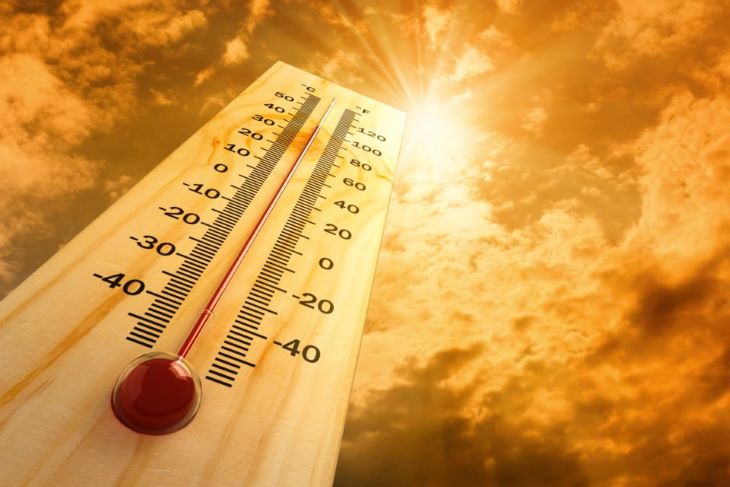As the summer heat intensifies across Ontario, public health officials are raising concerns about the potential health impacts of extended high temperatures. Yesterday afternoon, I watched elderly neighbors struggle with groceries as temperatures climbed to 34°C in Toronto’s concrete corridors, a scene playing out in communities across the province.
“Heat-related illness can affect anyone, but we’re particularly concerned about vulnerable populations including older adults, young children, pregnant women, and those with chronic medical conditions,” explains Dr. Melody Chen, Associate Medical Officer of Health at the Simcoe Muskoka District Health Unit.
The health unit has activated its heat response protocol after Environment Canada issued warnings for much of Southern and Central Ontario, where humidex values have reached the mid-40s in some regions. This extreme heat is expected to continue through the weekend, with only marginal relief overnight.
For many Ontario residents, the combination of high temperatures and humidity creates dangerous conditions, especially in urban areas where the heat island effect can increase temperatures by several degrees compared to surrounding rural areas. A 2022 study by researchers at the University of Waterloo found that Ontario’s urban heat islands can experience temperatures up to 7°C higher than nearby natural landscapes during summer heat events.
“What makes this particularly challenging is that many homes in Ontario weren’t built with extreme heat in mind,” notes Emma Koivistoinen, climate adaptation specialist with Clean Air Partnership, a Toronto-based environmental organization. “About 20% of Ontario households don’t have air conditioning, and those numbers are higher among lower-income communities.”
In response, municipalities across the province have opened cooling centers in public libraries, community centers, and municipal buildings. Toronto alone has activated more than 180 cooling spaces, while smaller communities like Huntsville have transformed town halls and arenas into relief centers.
When I visited a cooling center in Hamilton yesterday, I met Gladys Thompson, 84, who lives alone in an apartment without air conditioning. “My building gets so hot I can barely breathe,” she told me while fanning herself in the air-conditioned library. “I come here during the day, but I worry about the nights.”
Thompson’s concerns highlight a critical issue: nighttime temperatures during heat waves often remain dangerously high, preventing the body from recovering from daytime heat stress. Health Canada research indicates that consecutive nights with temperatures above 20°C significantly increase the risk of heat-related mortality, particularly among seniors and those with pre-existing health conditions.
The Simcoe Muskoka District Health Unit recommends several strategies to stay safe during extreme heat events. Dr. Chen emphasizes the importance of hydration: “Drink plenty of cool liquids, especially water, before feeling thirsty. Thirst is not a good indicator of dehydration.“
Other recommendations include scheduling outdoor activities during cooler parts of the day, wearing loose-fitting, light-colored clothing, and taking cool showers or baths. For those without air conditioning, spending even a few hours in air-conditioned spaces like shopping malls, libraries, or cooling centers can significantly reduce the risk of heat-related illness.
Community support networks have also mobilized across the province. In Sudbury, the “Cool Neighbors” program pairs volunteers with vulnerable residents to check on them during extreme heat. Meanwhile, in Windsor, which frequently experiences some of Ontario’s hottest temperatures, the health unit has distributed portable air conditioners to high-risk individuals through a heat vulnerability mapping project.
“These community-based approaches are critical because heat vulnerability isn’t just about temperature—it’s about social isolation, housing quality, and access to resources,” explains Dr. Jamal Hassan of Health Canada’s Climate Change and Health Office.
The health impacts of extreme heat extend beyond the obvious concerns of heat exhaustion and heat stroke. Emergency department visits for various conditions, including respiratory and cardiovascular problems, typically increase during heat waves. Data from the Ontario Health Insurance Plan shows a 12% average increase in emergency room visits during extreme heat events over the past five years.
Climate scientists warn that what we’re experiencing now may become our new normal. The Climate Atlas of Canada projects that by mid-century, Ontario cities could experience three to four times as many days above 30°C compared to historical averages if global carbon emissions continue on their current trajectory.
As Ontario residents navigate this challenging period, public health officials emphasize that checking on vulnerable neighbors and family members is one of the most important actions people can take. The elderly, those living alone, and people with chronic health conditions are particularly at risk during extreme heat.
“This is fundamentally about community care,” reflects Koivistoinen. “The infrastructure and social systems we build today will determine how resilient we are to the changing climate of tomorrow.”
For now, as the heat dome continues to blanket much of Ontario, residents are advised to stay vigilant, stay cool, and stay connected with those most vulnerable to heat’s effects.






